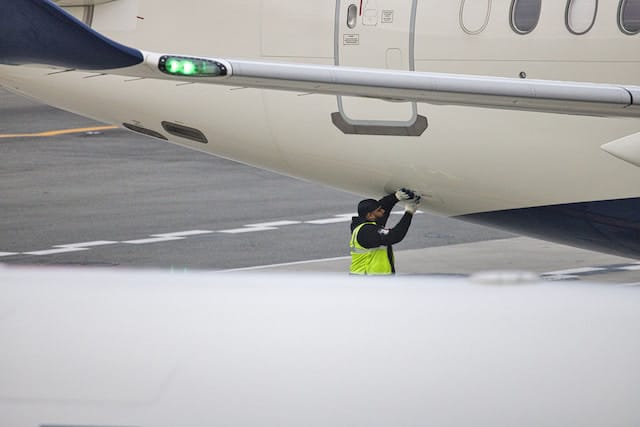
It does not matter if you are a seasoned pilot or a curious traveler; awareness of preflight aircraft checks is essential to guarantee the safety and success of your journey. In this post, you will look at each concept in great detail, providing expert perspectives and firsthand knowledge to help improve your understanding.
1. Keeping an Eye on Fuel Levels
Before taking off, one of the most important things to think about is whether or not the airplane has a sufficient amount of gasoline on board. Inadequate fuel levels can result in emergencies during flight or potentially catastrophic accidents due to engine failure. Inadequate fuel levels can lead to both. To reduce the likelihood of these adverse outcomes, pilots carefully calculate the amount of gasoline that will be required, taking into account variables such as travel distance, the prevailing weather conditions, and the possibility of making detours.
2. Evaluation of the Current Weather Conditions
The flight safety of airplanes is significantly influenced by the current state of the weather. Due to the fact that inclement weather can result in turbulence, poor visibility, and other potentially dangerous occurrences like thunderstorms, it is essential to constantly monitor and assess the weather conditions that are currently in effect. When it comes to making knowledgeable decisions and safeguarding the safety of passengers, pilots place a significant amount of reliance on technologically advanced weather forecasting technology.
3. Strict Maintenance Procedures
The frequent and diligent performance of aircraft maintenance is absolutely necessary to ensure flight safety. Regular inspections are performed on aircraft to detect and correct any potential problems well in advance of their impact on passengers. During maintenance checks, a wide variety of aspects, including, but not limited to, the performance of the engine and the structural integrity of the aircraft, are examined and evaluated. It is imperative for the safety of the flight that all of the systems be checked to ensure that they are in proper working order.
4. Precise Calculation of Weight and Balance
The distribution of the mass throughout the aircraft has a direct bearing on how stable the flight will be. If an airplane is loaded unevenly or to the point that it surpasses the maximum weight restriction for that particular model, it has the potential to become uncontrollable, putting the lives of everyone on board in jeopardy. The pilots perform precise calculations on the aircraft’s weight and distribution of mass to check that it remains within the permissible range of parameters at all times. This allows them to avoid any potential disasters that might have taken place.
5. Validation of the Navigational System
Modern aircraft rely on extremely sophisticated navigation systems to plot their courses accurately. To guarantee a risk-free journey, it is of the utmost need to check that all of these systems are operating properly and correctly configured. To ensure that they will arrive safely at their destination, pilots will verify all of the navigation data twice and bring along a secondary set of systems in case the original ones become inoperable.
Air Data Test Sets, more commonly referred to as ADTS, play an important part in the aviation industry by confirming the correctness and reliability of an aircraft’s air data systems. These specialized pieces of equipment provide several benefits that add to both commercial and military aircraft’s overall performance, including improvements in safety, efficiency, and effectiveness. These devices are essential for both the control of the flight and the navigation of the aircraft.
6. Examination of Contingency Planning and Equipment
Emergencies can happen at any time, even on the safest planes. In precarious circumstances like these, operational safety gear on board can be a decisive factor in determining whether or not a person survives. This gear consists of oxygen masks, life jackets, and fire extinguishers, among other things. The peace of mind comes from knowing that all of the emergency equipment has been thoroughly inspected and is in good working condition before takeoff is provided to the crew and passengers.
Conclusion
These checks serve as the foundation for safe and successful flights, and the pilots and crew members dedicated to the mission ensure that they are carried out with unrelenting commitment. You will better understand the stringent safety regulations that govern aviation if you delve into the complexities of these checks. This will make your flights both safer and more pleasurable.